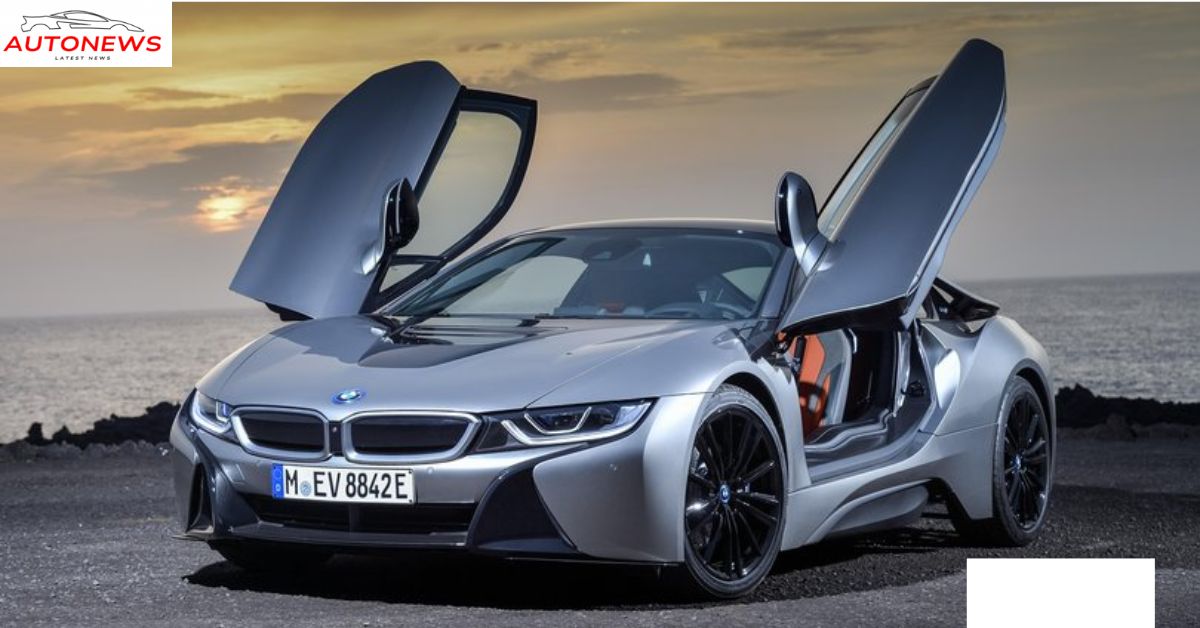In a world increasingly conscious of environmental impact, automotive innovation is no longer just about speed and power—it’s about creating high-performance machines that also tread lightly on the planet. Enter the BMW i8, a plug-in hybrid sports car that has redefined what it means to drive responsibly, without compromising on luxury or exhilaration.
Launched in 2014 and discontinued in 2020, the i8 wasn’t just a car; it was a statement. A statement that sustainability and performance are not mutually exclusive. With its revolutionary design, advanced hybrid powertrain, and unmistakable presence, the BMW i8 became a symbol of the future—available in the present.
A Design from Tomorrow
One of the first things anyone notices about the BMW i8 is its jaw-dropping design. The low-slung body, aerodynamic curves, and scissor-style doors give it an exotic, supercar aesthetic. It looks like something that belongs in a sci-fi movie, and that was entirely intentional. BMW wanted the i8 to not only perform differently but to look like the future—and they succeeded.
Constructed with a lightweight carbon-fiber-reinforced plastic (CFRP) passenger cell and an aluminum chassis, the i8 balances strength and lightness. The exterior lighting, composed entirely of LEDs (with optional laser headlights), adds to the car’s ultra-modern appeal.
Hybrid Heart, Sports Car Soul
Under the hood—or more accurately, spread throughout its clever hybrid layout—the BMW i8 combines a 1.5-liter three-cylinder turbocharged gasoline engine with an electric motor. The gasoline engine powers the rear wheels and generates 228 horsepower, while the electric motor, driving the front wheels, produces an additional 141 horsepower. Combined, they deliver a total of 369 horsepower and a 0-60 mph time of around 4.2 seconds.
This dual-motor setup provides not only rapid acceleration but also all-wheel-drive capability, something that adds to the car’s handling prowess. While the i8 might not match traditional sports cars like the Porsche 911 or Audi R8 in raw performance, it makes up for it with efficiency, silence at low speeds, and cutting-edge technology.
The car can drive in electric-only mode for up to 18 miles, making it ideal for short commutes without using a drop of fuel. For longer trips, the hybrid system seamlessly blends electric and gasoline power to offer both efficiency and performance.
Efficiency Without Sacrifices
The BMW i8’s hybrid powertrain wasn’t just a gimmick—it was a commitment to sustainability. In real-world conditions, drivers could expect around 70–80 MPGe (miles per gallon equivalent), making it one of the most fuel-efficient cars in its class.
BMW didn’t just focus on the powertrain. The i8 was also assembled in a sustainably powered factory in Leipzig, Germany, using renewable energy. Many of its materials, including the interior trim and leather, came from recycled or sustainably sourced resources. This attention to detail reflected BMW’s larger vision: to prove that even a luxury sports car can be made responsibly.
Inside the Cockpit
Climbing into the i8 is an event. Those butterfly doors lift up gracefully, revealing a high-tech, minimalist interior that still feels unmistakably BMW. The driver-focused cockpit includes a digital instrument cluster, premium leather seating, and intuitive iDrive controls. The seats are snug and supportive, emphasizing the car’s sporty intentions.
Although it’s technically a 2+2 coupe, the rear seats are better suited for small children or extra luggage. The trunk space is limited due to the hybrid system’s components, but for a car of its class and mission, practicality isn’t its primary focus.
A Legacy Ahead of Its Time
The BMW i8 ended production in 2020, but its influence is far from over. It laid the groundwork for BMW’s growing i-series and electrified vehicles like the BMW i4, iX, and i5. While the automotive world was still warming up to hybrids and electric cars, the i8 dared to offer a complete package—style, performance, and eco-consciousness—well ahead of the curve.

